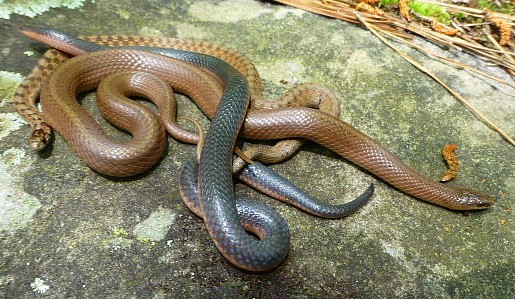|
(Above & Right) Yellowbelly Water snake (Nerodia erythrogaster
flavigaster). One of five harmless Water snakes found in the Ouachita region. Unfortunately many people
confuse the harmless species with Cottonmouths and needlessly kill them.
(Above) A Western Smooth Earth snake (Virginia valeriae
elegans).
| Common Map turtle (Graptemys geographica) |
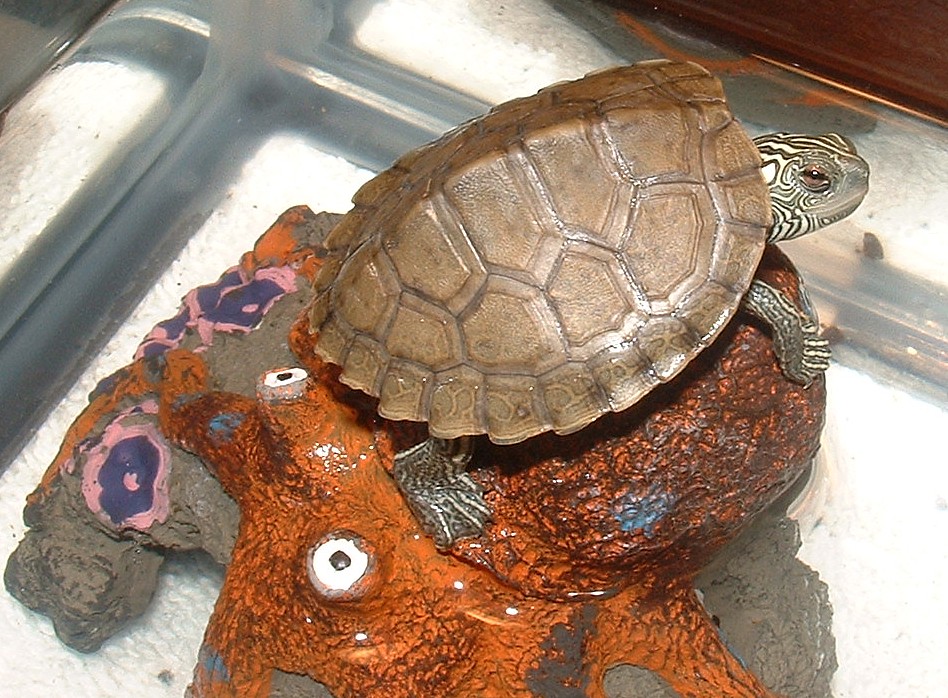
|
| A juvenile c. 1 inch long, a tiny turtle! |
| Western Cottonmouth (Agkistrodon piscivorous... |
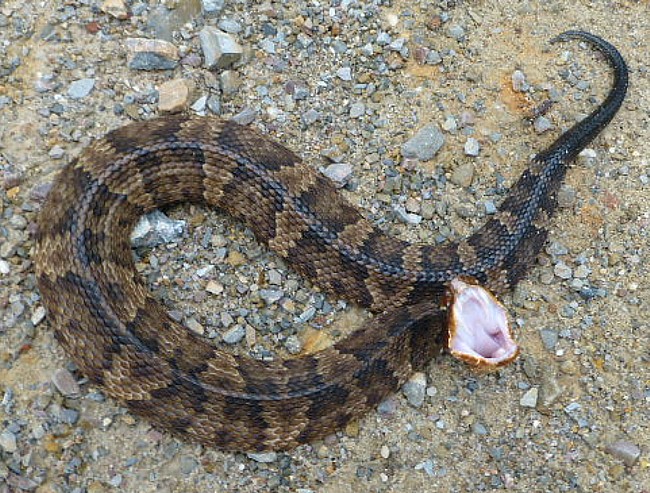
|
| Smiling snake, showing why it's named a Cottonmouth! |
Venomous
snakes
(Above, below & lower right)
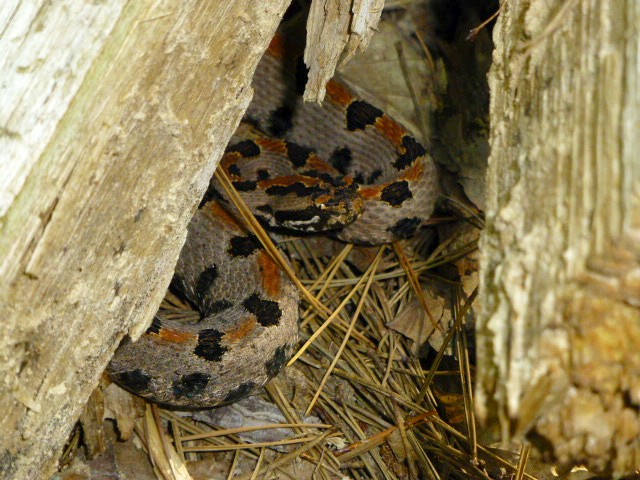
|
| Western Pygmy rattlesnake (Sistrurus miliarius streckeri) |
(Above & right) Pygmy
rattlesnakes make up for their small size with a big attitude! At most their rattle sounds like a bee buzzing.
It's important to wear boots while hiking because these small snakes can be easily missed and stepped on, leading to a
bite on the toes or ankle.
| Venomous! |

|
| Timber rattler (Crotalus horridus) |
Thanks to USACE Park Ranger Daniel Adams for the loan of his camera to take
the Copperhead photo to the right.
|
 |
|
|
|
 |
|
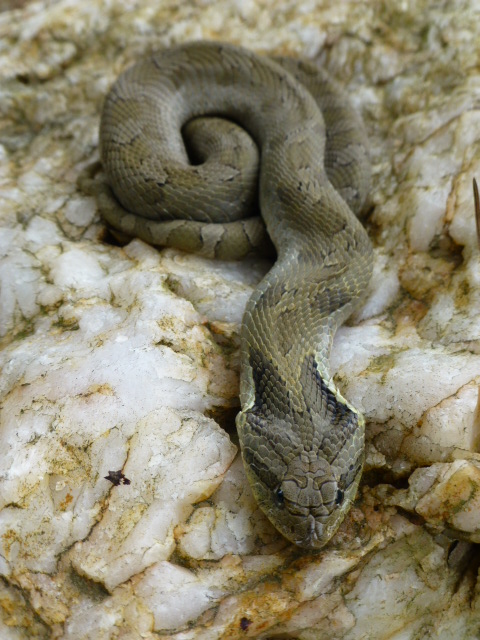
|
| Eastern Hognose snake (Heterodon platirhinos). |
(Above)
Hognose snakes win the Academy Award for best actor and can put on quite a show when encountered. Hognoses
will act very aggressively, strike, huff and puff, but it's just a show, they will not bite. If the first act
doesn't encourage you to leave them alone their next act is to play Opossum. Suddenly the snake will act as
if it is dying and go into convulsions, often regurgitate its last meal and roll over and play dead. This once
again is just an act for if you roll them over upright, they will immediately roll back over and play dead again!
This once common species has declined greatly over much of its range.
Special Note: To the average person the Hognose
snake (above) and the Pygmy rattlersnake (below) could be confused with one another. All the more reason to learn to
identify your venomous snakes!
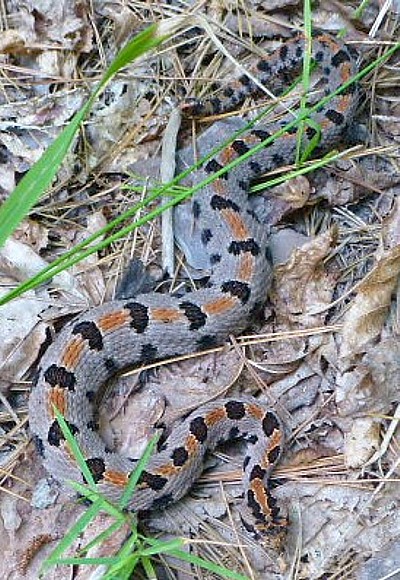
|
| Western Pygmy rattlesnake (Sistrurus miliarius streckeri) |
| Venomous closeup! |

|
| Timber rattler (Crotalus horridus) |
| Venomous |
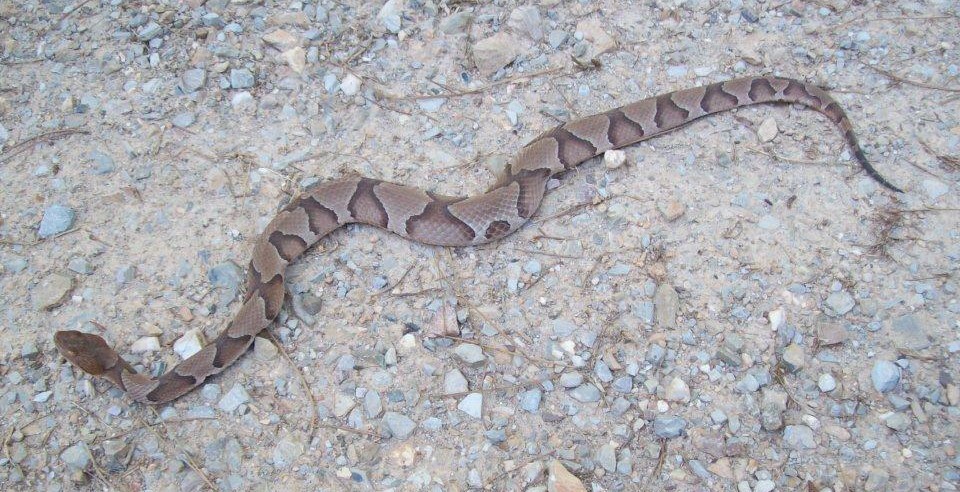
|
| Southern Copperhead (Agkistrodon c. contortrix) |
|
 |
|
|
|

